Belkin Qi2 25W Wireless Charger
Wireless charging on the Pixel 10 got faster and easier with Pixelsnap.
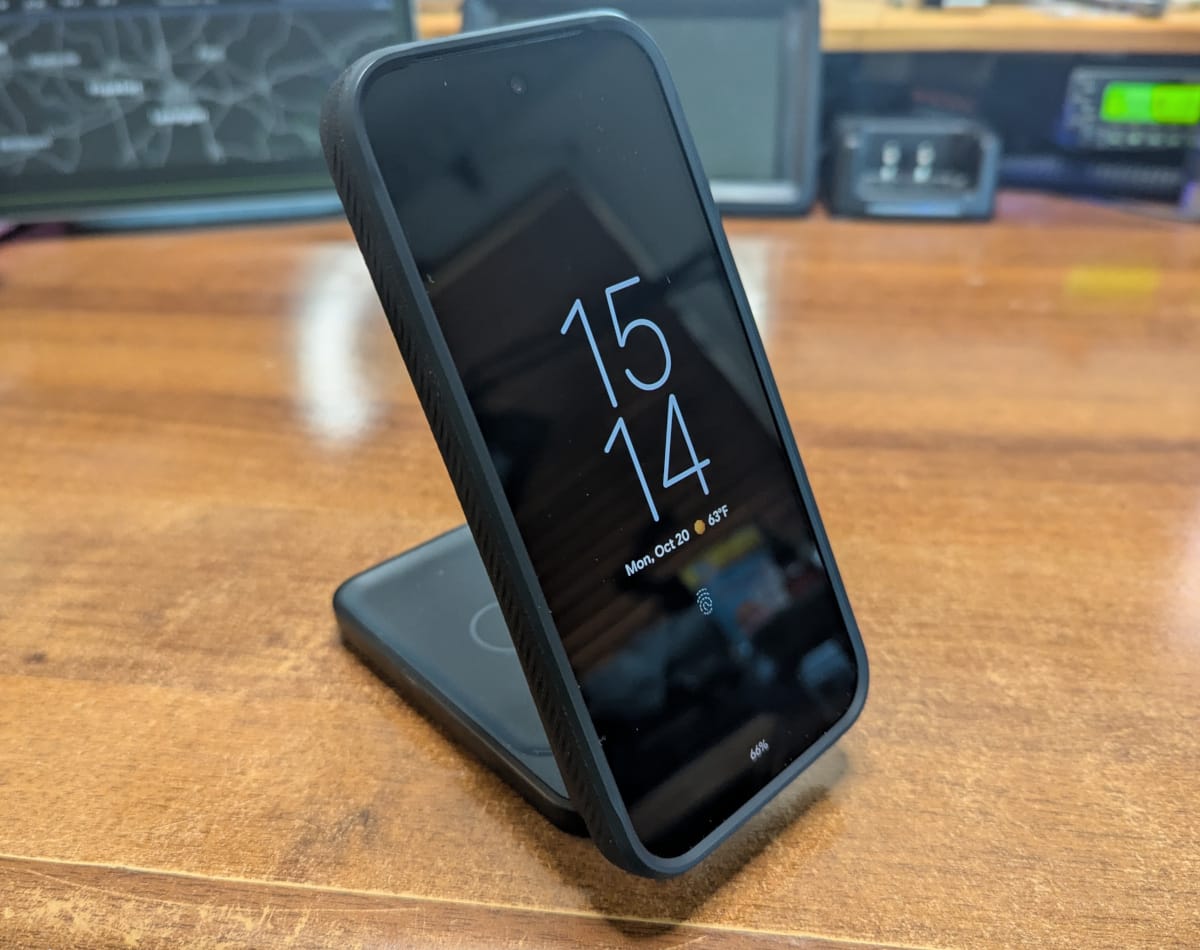
I upgraded my aging Pixel 6 for a Pixel 10 a while back, and attempted to use the wireless charging dock that I used on the Pixel 3 and Pixel 6 with zero problems. On the Pixel 10, however, the charger itself gets extremely hot, particularly after it has finished charging. I still have no idea why, and I like wireless charging, so I somewhat reluctantly looked around for a suggested wireless charging cradle for the Pixel 10, and I settled on the Belkin UltraCharge 2-in-1 Foldable Magnetic Charger with Qi2 25W. Say that three times!
My devices, cases, etc
I am using a Pixel 10 (base model) with the Spigen Rugged Armor MagFit case; I have not tried without it, as I never take a phone case off except to clean it periodically. This case has magnets built into the case for compatibility with magnetic (Pixelsnap) accessories.
I also have a set of Pixel Buds Pro 2 in a generic TPU case that I will be evaluating and charging on the stand.
Charger design
The charger is designed to be foldable for portability and I saw some reviews where folks said the hinge isn't quite stiff enough to stay up, but so far I've not had any issues with this, but I've always held the phone in a way that I can feel the charger behind it and align it (prior to having magnets) and this also works to align the phone to the charger and then it just clicks into place. The great thing about the magnetic attachment is that you can't possibly put the phone on incorrectly. It will work at any angle, and no worries about not perfectly centering the phone in the exact middle of the charger like I've had issues with in the past on other wireless chargers.
The charger also has a secondary 5-watt wireless charger on the top of the base, which works perfectly well with my Pixel Buds Pro 2, and even has an extra USB-C port on the side, which can supply 5 watt. I have charged the phone and my Pixel Buds, and it appeared to not affect it charging rate, but the ability to charge from all three locations at full speed at once is not explicitly mentioned in the specifications or marketing.
The primary charging pad has a rubber coating over it, so there's likely no concern with its strong pull, and the rubber coating also keeps the phone in the orientation that you prefer.
There is a chance that contamination on the rubber pad could scuff the back of the phone without a case. Not a problem on non-magnetic chargers, but on a magnetic charger like this one, with the magnetic force between charger and phone, I could see this being possible. I always use a case, but I know some folks do not.
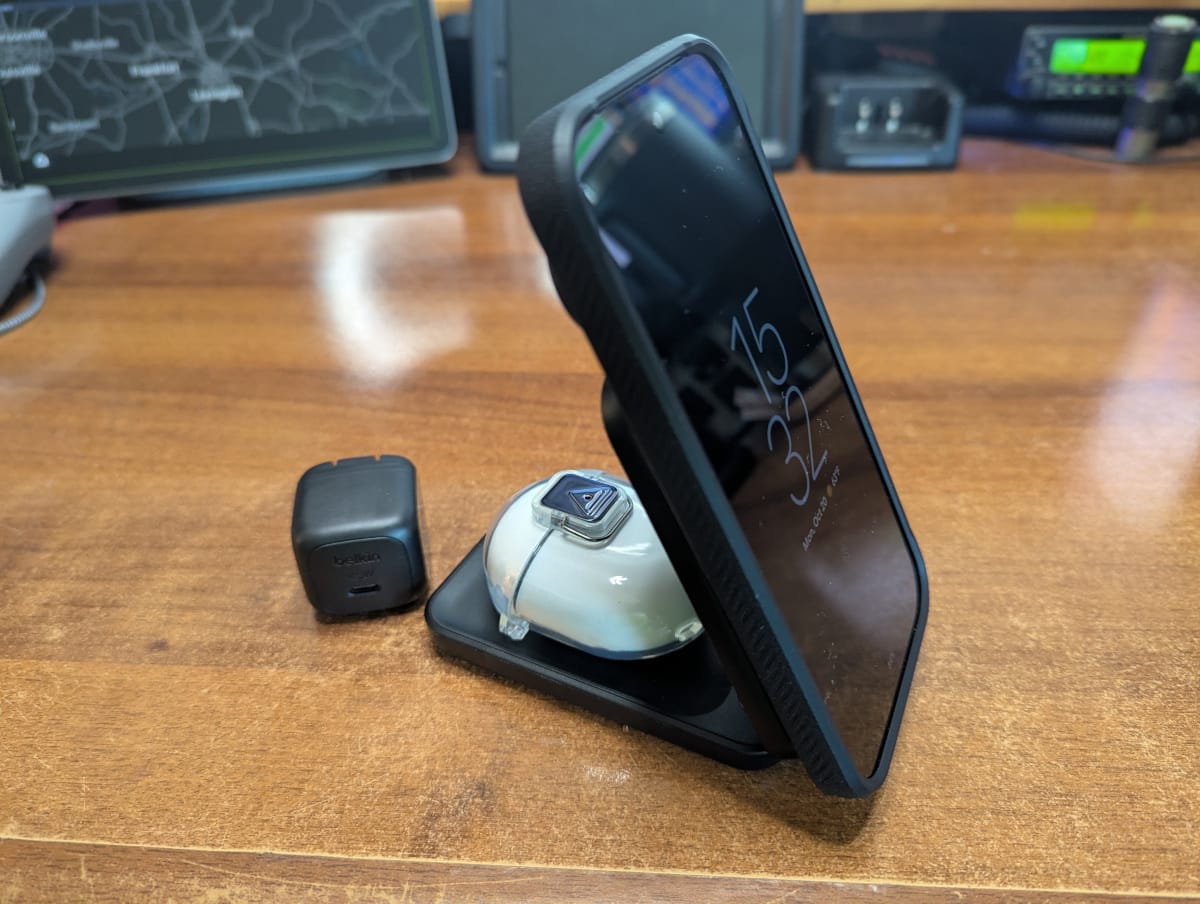
Charger usage
The magnets in the Belkin are very strong and have no problem holding the phone securely in any orientation. To remove it I even have to wrap my fingers around the bottom of the phone so my fingers go between the phone and the charger, which lifts it off the magnetic pad and releases it. Not complicated, just strong enough that you're not going to just pick the phone up and it detach without doing this.
I have also charged my Pixel Buds Pro 2 on the secondary 5W charger in the base, and even in their generic TPU case, they seemed to charge just fine.
Charge times and heat
Any time I mention a charging rate, I am referring to the data that I see in the Android app Ampre. I can not otherwise verify precisely how fast things are charging except for how fast the device charges (ie, %/min) or the value that Ampre gives me. I have found in the past that it seems pretty close, but it could vary between devices in how accurate it is. For percent and battery temperature, Tasker logs this information on the phone. For the Pixel Buds. I am using an infrared thermometer and just manually logging information by watching the case battery status from their settings.
Pixel 10
I've monitored my phone charging a few times on the charger with the phone settings set to charge to 80%. I've done this for personal reasons, but it also helps in this charge analysis, as there should be no end-of-charge slowdown as the battery approaches 100%. The following is what I've observed:
| Starting Battery | Ending Battery | Avg %/min | Start Temp | Peak Temp | Total Time | Note |
|---|---|---|---|---|---|---|
| 25 | 80 | .85 | 29.2C | 39.8C | 67 | Run 1 |
| 40 | 80 | .95 | 29.7C | 38.3C | 45 | Run 2 |
| 33 | 80 | .84 | 26.3C | 39.3C | 60 | Run 3 |
| 35 | 80 | .9 | 30.6C | 39.6C | 50 | Run 4 |
On runs that needed to charge more (1, 3, and 4) as soon as the temperature reached just under 40C, it only charged at 0-.2%/hr, and the temperature dropped, and then the charging speed picked back up after that and shortly after completed charging. It appears to me that the phone or charger throttles back about this point. On the 40-80 run (2), its peak temperature occurred as it was finishing charging.
Below is a graph of Run 4. There are a few small temperature peaks, but right at about 73% charge, the temperature rises and throttles back for a few minutes, then continues until it charges to full (80%). I don't believe the state of charge is why the temperature peaks at this point; I believe it's simply building up heat until it reaches a threshold and just happens to be around 70% as my charges are pretty similar.
I'm not entirely clear why the temperature continues to fall from that point, although it does appear that at the peak of near 40C it throttles back entirely, then for a total of about 6 minutes it is only charging at a rate of .5%/minute, picks back to 1%/minute, and then charging completes. Including separate percent/temp charts and charge rate charts, as it's hard to show them on the same chart with such large scale differences.
And in case you're wondering, times are captured in UTC; I am really going to bed around midnight. These graphs start when I put the phone on the charger.
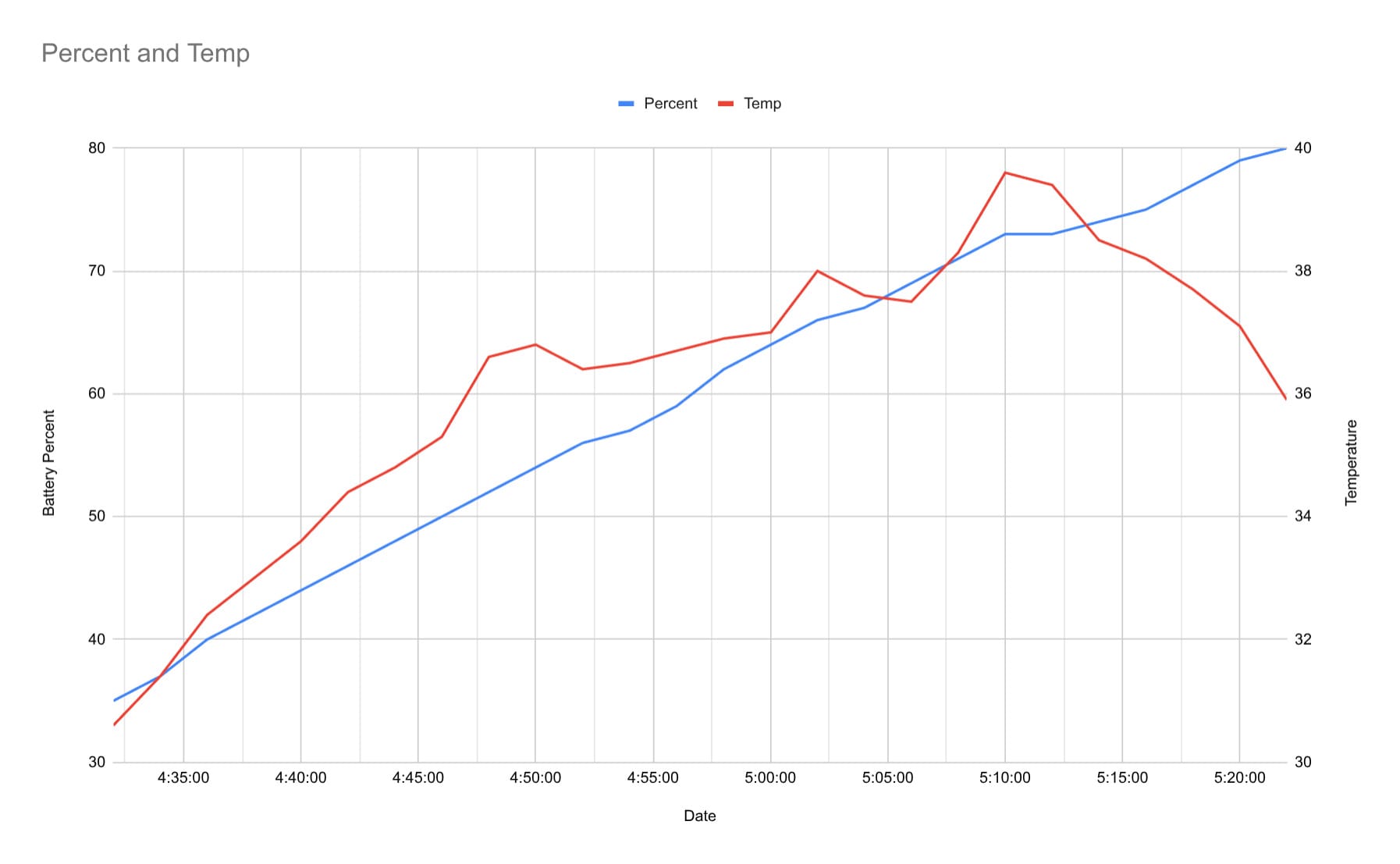
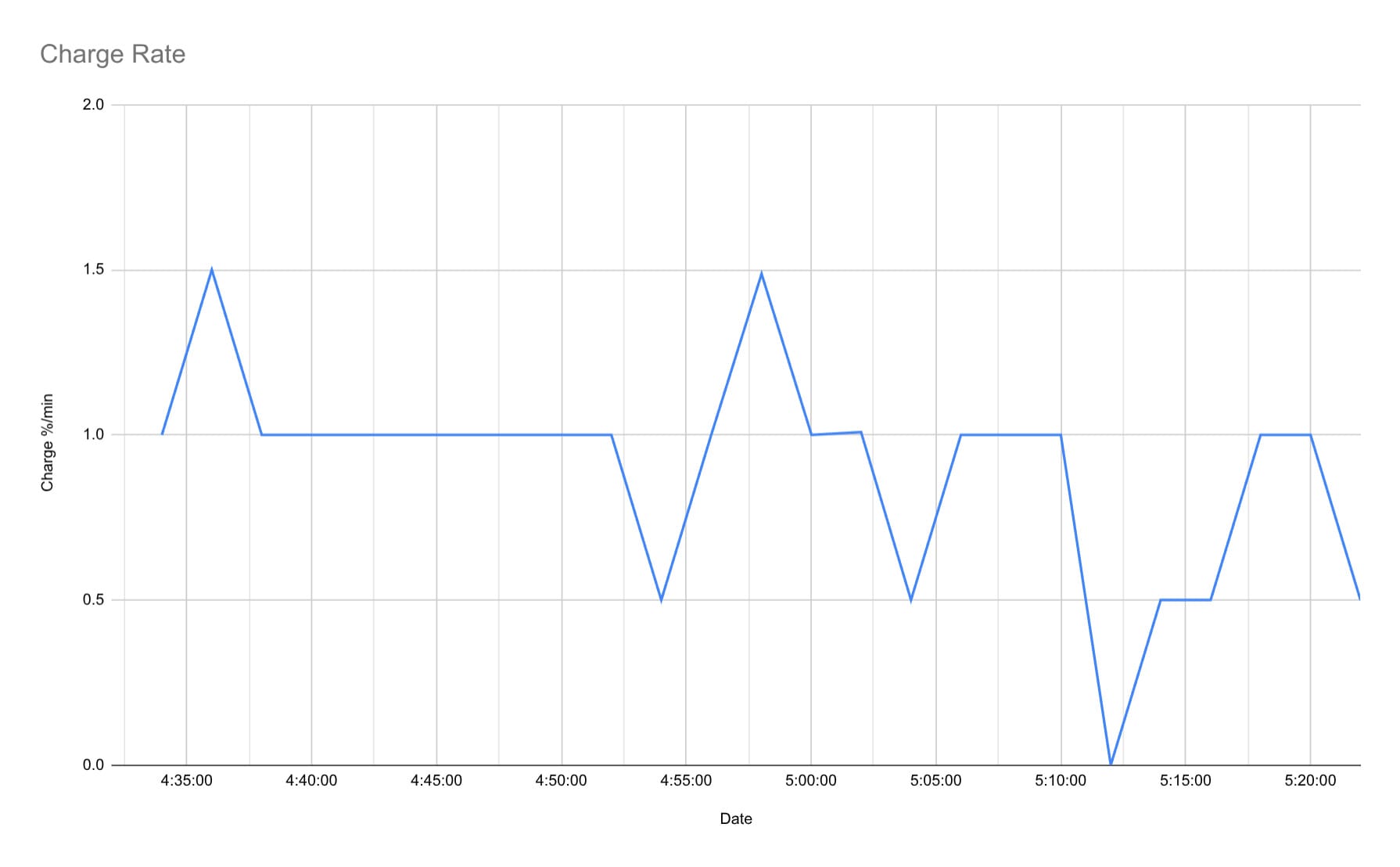
All wireless chargers generate more heat in themselves and in the phone than wired charging. This charger has what Belkin calls their Passive ChillBoost technology, which in this case means the charger monitors heat and manages the charging speed to keep heat down to a reasonable level. There's no way to disable it, so comparing how effective this is would be difficult, but presumably, they throttle charging if the charger gets too warm. The charger can't directly measure the phone temperature, but it may monitor it indirectly. Belkin also makes other chargers with "Active" ChillBoost, which contains a fan that most likely reduces heat more than their "Passive" models, at the expense of extra noise.
Charging wirelessly does raise the temperature up to 40C, which is higher than I'd really prefer. A slower wireless charge (if it were possible) would be better for battery longevity.
After doing some testing with the INIU Qi2 Certified 15W Mag-Safe Wireless Charger, which will charge at a lower speed when charging from 5V, I decided to see if the Belkin charger could run at 5V off of a normal USB power supply, but it cannot, so there is no way to slow down the charge rate.
Pixel Buds Pro 2
Charging my Pixel Buds on the secondary charger seemed to charge at the same rate and only a small increase in temperature compared to a USB charge cycle. I have no real way to measure their temperature directly, but using a temperature gun, I measured the following:
| Starting Battery | Ending Battery | Avg %/min | Start Temp | Peak Temp | Total Time | Note |
|---|---|---|---|---|---|---|
| 57 | 100 | 1.1 | 23.3C | 27.9C | 40 | With TPU Case |
| 55 | 100 | 1.0 | 18.3C | 25.5C | 43 | Without TPU case |
| 54 | 100 | 1.0 | 21.6C | 24.5C | 46 | USB, without TPU Case |
The temperature does rise a bit on the Pixel Buds while charging, but not enough to be concerning, and only a few degrees over a USB charge.
Included 45W Wall Adapter
I should also mention that the wall adapter that's included is a pretty solid charger on its own if you need an even faster charge. It claims to be Power Delivery 3 certified and charged my Pixel 10 at 5500mAh peak, but typically saw 4000mAh as I watched the rest of the charge cycle. The wall charger is included with the wireless charger, but should you be curious about looking at it more specifically, it appears to be the Belkin BoostCharge Compact USB-C Wall Charger 45W, model WCA013dq.
And for the observant, no, I don't have a USB cable included in any of the images, but the one that is included is quite nice and plenty long at 5 feet (1.5 meters).
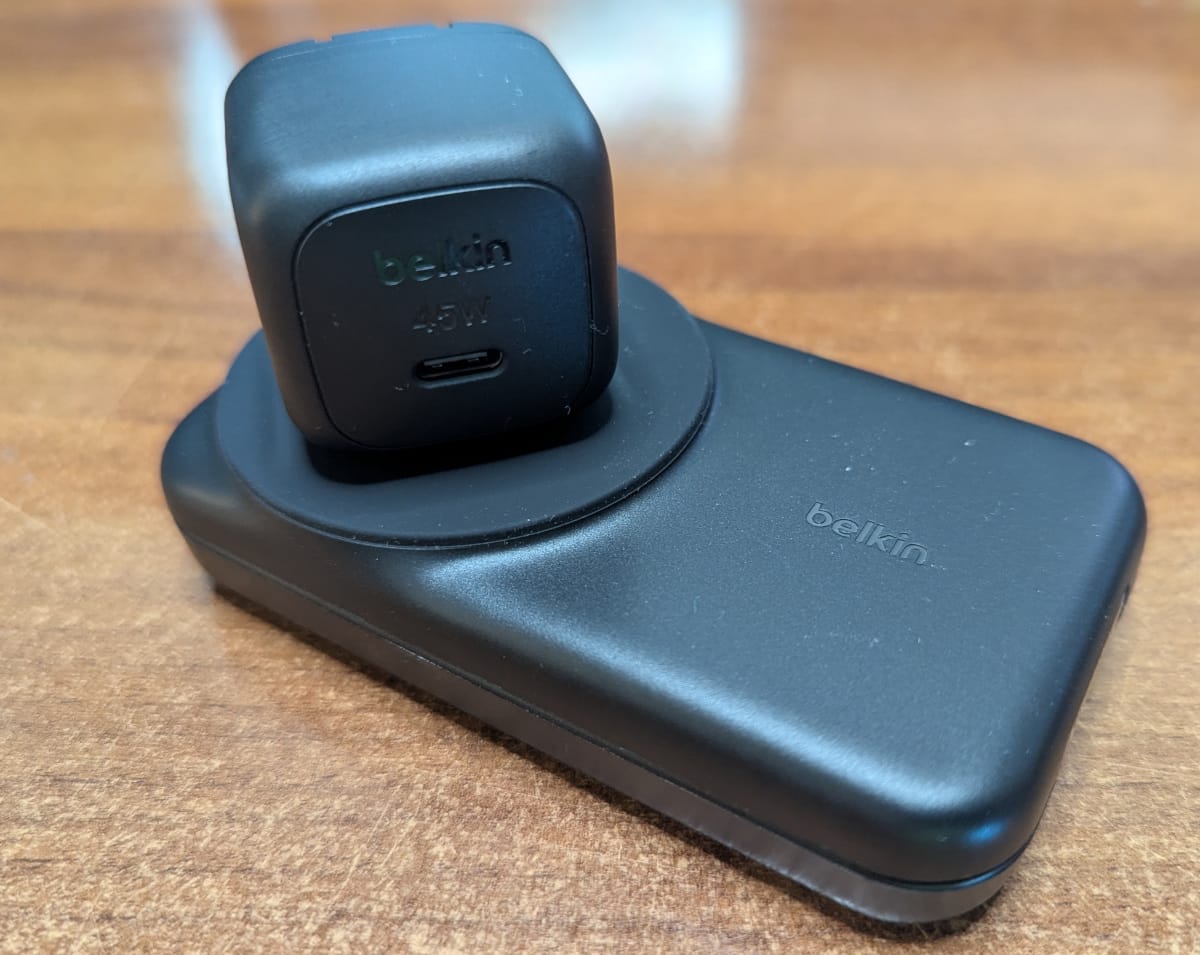
And here are some stats for directly charging the Pixel 10 from the included wall adapter for comparison.
| Starting Battery | Ending Battery | Avg %/min | Start Temp | Peak Temp | Total Time | Note |
|---|---|---|---|---|---|---|
| 29 | 80 | 1.3 | 32.2 | 37.6 | 40 | Run 1 |
Charging from the wall adapter charges faster, but not for very long. Within 16 minutes, the heat peaks at 37.6C and then the heat declines from there because the charge rate also declines from about 2%/minute to 1%/minute.
I'm going to do at least one more data run, and if things are looking consistent, I'll add graphs.
Charging using the 45W adapter does charge quickly, but it will quickly raise the temperature up to nearly 40C, which is higher than I'd really prefer. A slower wired charge would be better for battery longevity.
Things I wished it had
Honestly, I do wish this one had the Active cooling technology on it. The charger they offer with the Active cooling, with a built-in fan, likely keeps things cooler, but it is twice the price. On the Active model, you can also turn off the fan with a switch, which, presumably, would behave similarly to how the "Passive" models function.
And since they already have a switch on the charger to tweak the fan being on or off, it would be really nice to have a Slow Charge feature built into the charger. Most of the time, I am charging overnight, so even 10 watts would be more than enough to charge the phone more slowly and cooler. My old charger charged my Pixel 6 slowly, but never got noticeably warmer during charging.
Summary
Overall, the wireless base and the 45-watt wall charger combined are a pretty good value for what this charger sells for. A lot of other chargers do not include the wall charger, or the wall charger can't be used on its own. I don't like heating up the phone while I charge it, but in reality, it doesn't heat the phone up all that much, and it's very convenient, especially when using the phone in bed. I can quietly reach over and put it on the charger without disrupting my wife. The option for a slower wireless charge rate would be very welcome, however.
Everything in this post has been purchased by me, for me, no sponsors in any way, and neither Google nor Belkin is in any way involved. I mention products by name so you can look for them yourself, but there will be no links except potentially to other articles I have written myself.
